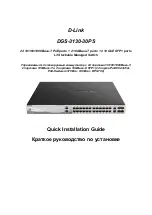
375
As shown in
, the edge domain is an MPLS network. The UPE creates a U-PW with NPE 1. The
UPE does not create PWs to any remote PEs. After receiving a packet from a CE, the UPE adds the label
assigned to the U-PW into the packet and then forwards the packet to NPE 1 through a public tunnel.
NPE 1 maps the packet to the VSI that corresponds to the PW label, and searches the MAC address table
of the VSI to forward the packet.
NOTE:
A U-PW created on the NPE must have split horizon disabled because the NPE needs to forward packets
between U-PW and N-PW.
Figure 97
H-VPLS using Ethernet access
As shown in
, the edge domain is an Ethernet network. The UPE and NPE 1 establish a
point-to-point Ethernet QinQ connection in between. After the UPE receives a packet from a CE, it adds
an outer VLAN tag into the packet and forwards the packet to NPE 1. NPE 1 regards the outer VLAN tag
as the service provider VLAN tag. It maps the packet to the VSI that corresponds to the VLAN tag and
then searches the MAC address table of the VSI to forward the packet.
UPE dual homing and PW redundancy
To provide U-PW redundancy for a UPE, you can connect the UPE to two NPEs. Even if a U-PW fails, all
customer sites connected to the UPE still maintain the connectivity.
In the H-VPLS using MPLS access as shown in
, the UPE is connected to two NPEs through
primary and backup U-PWs. The UPE uses the primary U-PW to forward traffic. When the primary U-PW
fails, the UPE uses the backup U-PW to forward traffic.
















































